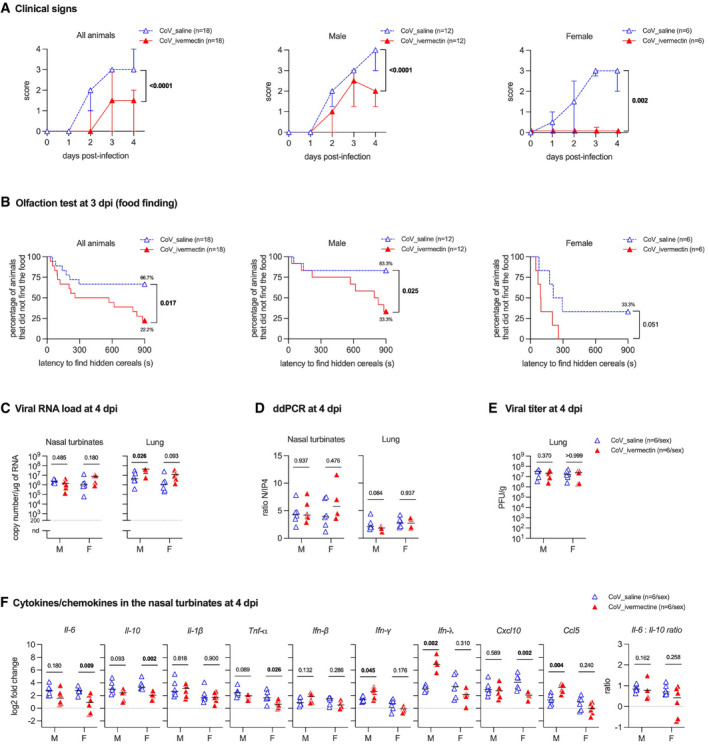Figure 1. Clinical presentation, olfaction test, viral load and immune profile in the nasal turbinates of SARS‐CoV‐2‐infected hamsters with and without ivermectin treatment.

-
AClinical signs in infected hamsters. The clinical score is based on a cumulative 0–4 scale: ruffled fur; slow movements; apathy; and absence of exploration activity. Symbols indicate the median ± interquartile range.
-
BOlfactory performance in infected hamsters. The olfaction test is based on the hidden (buried) food finding test. Curves represent the percentage of animals that did not find the buried food. Food finding assays were performed at 3 days post‐infection (dpi). Data were obtained from three independent experiments for males and two independent experiments for females.
-
CViral load in the nasal turbinates and in the lungs at 4 dpi.
-
DRatio between the CPD (copy per droplets, normalized to γ‐actin and Hprt reference gene relative expression) of structural [N, nucleocapsid] and non‐structural [IP4: RdRp, RNA‐dependent RNA polymerase] viral gene expression determined by digital droplet PCR (ddPCR) in the nasal turbinates and in the lungs at 4 dpi.
-
EInfectious viral titer in the lung at 4 dpi expressed as plaque‐forming units (PFU)/g of tissue.
-
FCytokine and chemokine transcripts in the nasal turbinates at 4 dpi in male and female SARS‐CoV‐2‐infected hamsters, treated with saline or with 400 µg/kg ivermectin.
Data information: Horizontal lines indicate medians. The P value is indicated in bold when significant at a 0.05 threshold. Mann–Whitney test (A, C–F) and log‐rank (Mantel–Cox) test (B). M: male hamsters and F: female hamsters. Data were obtained from two independent experiments for each sex. See Figs EV1 and EV2 and Appendix Fig S1.
Source data are available online for this figure.
